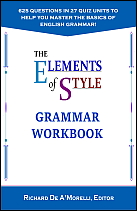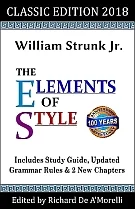
This special edition, inspired by James Allen’s classic, As a Man Thinketh, has been thoughtfully reimagined to reflect a woman’s perspective. In these pages, you’ll embark on a transformative journey and discover how a woman’s thoughts, perceptions, and beliefs shape her life and destiny. This compelling book examines philosophical, psychological, and self-help themes, highlighting the importance of personal growth, positive thinking, and unwavering self-confidence.
More than just a self-help book, As a Woman Thinks celebrates and acknowledges women’s strength, resilience, and power to effect change in themselves and the broader world. It provides a key to self-discovery and stands as a testament to the essence of the female spirit, reminding readers that “as a woman thinks, so she becomes; as she believes, so she is.”
Immerse yourself in an inspiring exploration of human potential, viewed through the unique lens of women’s experiences. The wisdom in these pages will inspire you to unlock the power of your thoughts, realize your full potential, and transform your future into all you hope it will be, and more. Unleash your potential today!
“As a woman thinks, so she becomes. As she believes, so she is.”

This book of daily affirmations is a collection of simple but easily forgotten principles of positive thought and living in the moment that can empower you to achieve success and happiness in life. Inspired by the changing seasons, the calendar months, and nature’s timeless wonder, these passages can serve as reminders that no matter what difficulties you face, when you plant positive seeds, they will blossom into positive results.
Language has always been a powerful catalyst to inspire and motivate, even in the darkest times. A few reassuring words at the right moment can make a tremendous difference in how things turn out. Instead of falling into frustration or despair, you can use these affirmations to reimagine your path forward with confident optimism. It’s as easy as taking a few minutes every day to step back from your hectic life, center yourself in the present moment, and reinforce your positive state of mind.
Author/editor Abby Leigh Hunter began writing this book at the height of the 2020 pandemic. Having moved from the Midwest to California a year earlier, she was far from home and stressed about the safety of her family and loved ones. Focusing on the positives in her life and drawing on her love of nature, she began jotting down daily affirmations that helped her to stay focused on living in the moment and maintaining a positive frame of mind.
Seasons change, your life will change, and each year can be better than the last if you take the actions necessary to remain positive and true to your goals. Never lose sight of life’s natural order: after every rain comes sunshine; after every storm, a tranquil calm; after night’s darkest hours, a new day always dawns bringing new opportunities to fill your life with prosperity and achieve your fondest dreams.

Dorian Gray is a remarkably handsome young man who views a painting of himself drawn by a friend and wishes that he could retain his youth and beauty, while the painting ages instead. His wish is granted, and he embarks on a life of pleasure-seeking and debauchery that has a predictably tragic ending.
The Picture of Dorian Gray is Oscar Wilde’s only novel, and although its daring embrace of decadence and sexuality sparked an uproar in Victorian-era England, the work today is regarded as a suspenseful and thought-provoking masterpiece as disturbing as it is intriguing.
Virtual University Press offers this classic in three editions to suit the needs of students and casual readers. Our Classic Edition contains the full-text of the story, lightly edited for modern readers, plus an Editor’s Introduction offering historical context on the book and an author bio. Our Study Guide & Workbook contains the Editor’s Intro, brief chapter summaries, discussion prompts, and chapter-based quizzes to help readers grasp and remember key details of the story. Our Academic Edition contains the full story plus the Study Guide & Workbook. Learn more about our special editions and explore our virtual classroom.

This essential workbook is designed for readers of the three most popular editions of William Strunk’s grammar classic, The Elements of Style. It can be used by readers of Strunk’s original work, now in the public domain; the “Strunk and White” edition by E.B. White; and The Elements of Style: Classic Edition (2018). (Scroll down to the next book on this page for details.) In addition, readers of other grammar textbooks, and ESL/EFL learners, may find this workbook useful for mastering the fundamentals of English grammar.
Learning grammar may seem like a boring task, but it is a must for students who wish to do well in their courses and for writers who want to improve their grammar and style. This comprehensive workbook presents a series of 27 quizzes with 626 questions, multiple-choice answers, and a convenient scoring key. Some quizzes drill on grammar rules covered in all versions of The Elements of Style; others are keyed to a specific edition.
To derive the most benefit from this workbook, you should complete a few quizzes each day. Take note of your correct and incorrect answers to reinforce the underlying grammar rules. You should have a firm grasp of each rule before going on to the next quiz. You will know that you are ready to proceed when you have answered all the questions on a quiz correctly.
Used in classrooms across America and around the world, The Elements of Style has helped generations of students and writers learn to write grammatically correct prose. Whether you are taking a course for which Strunk’s book is required reading, or you are a writer looking to polish your style, this companion workbook can help you to learn English grammar and use that knowledge to make your writing exemplary.

“A chilling tale of classic horror by H. P. Lovecraft…”
An expedition to the Antarctic meets with a gruesome fate, and survivors of a horrific attack on their camp discover the ancient ruins of an alien city concealed by a mountain range. While exploring the ruins, Prof. Dyer and a graduate student unexpectedly encounter a monstrous creature still alive, and they flee the mountain in terror. As their plane lifts off to safety, Dyer’s companion catches a glimpse of something so horrifying, he is driven over the edge into madness. Now, Dyer must retell the story to prevent a new expedition from returning to the deadly ice world lost in time.
At the Mountains of Madness is one of the most popular stories by H.P. Lovecraft, an early 20th-century writer who never achieved publishing success and died young at 46, broke and unknown; but today, he is widely recognized as one of history’s greatest horror writers. Iconic author Steven King observed: “Now that time has given us some perspective on his work, I think it is beyond doubt that H.P. Lovecraft has yet to be surpassed as the twentieth century’s greatest practitioner of the classic horror tale.”
This Academic Edition is designed for classroom use by English, literature, and writing students as well as casual readers looking for a great story. It contains the full text of Lovecraft’s novella, as well as an Editor’s Foreword offering historical context on the book, an Author Bio, a Study Guide, and a full set of chapter-based quizzes. It also features an interactive component, providing readers free online access to a virtual classroom devoted to this literature classic on the Virtual University Press website (see Editor’s Foreword for details.)

Another Classic Horror Thriller by H. P. Lovecraft
An unspeakable horror lurks in the secluded hills of rural Vermont. After the historic floods of 1927, mixed in with news stories of human loss and suffering are multiple reports of weird, sponge-like life-forms floating in a local river. Albert Wilmarth, a literature professor and folklore expert, responds to the claims with a healthy dose of skepticism and chalks up the sightings to naive locals mistaking storm-battered human remains for imagined aliens washing down from the hills. But he agrees to take a closer look after he receives a letter from Henry Akeley, a reclusive academic in Vermont who claims to have proof of the aliens’ existence. As the two men correspond, the tone becomes ominous when Akeley’s letters are mysteriously intercepted, and unseen forces attack his farmhouse at night. After gunfire erupts and Akeley’s guard dogs are killed, he begins making plans to flee from his home.
Wilmarth is baffled by Akeley’s next letter, praising the aliens and calling them benevolent. He urges Wilmarth to take a train to his Vermont farm for a meeting and asks that he bring with him the letters, photos, and other evidence Akeley had sent to prove that aliens lurked in the hills. Within hours of his arrival, Wilmarth becomes a terrified believer and flees the farmhouse in fear for his life. When he returns with the local sheriff, Akeley has vanished and so has the proof of the alien’s existence.
This Academic Edition is designed for classroom use by English, literature, and writing students, as well as casual readers in search of a great story. It contains the full text of Lovecraft’s novel, The Whisperer in Darkness, as well as an Editor’s Foreword offering historical context on the book, an Author Bio, a Study Guide, and a full set of chapter-based quizzes. It also has an interactive component, providing readers free access to a virtual classroom devoted to this literature classic on the Virtual University Press website.

One of H. P. Lovecraft’s most popular horror stories.
The village of Dunwich holds a terrible secret. Rumors of unholy bonfires, black magic rituals on a nearby hilltop, and the unearthly screeching of whippoorwills on certain nights of the year hang over the town like a dark shroud. But it was during the harvest season in 1928 that a series of horrific events changed the town forever.
Born in 1913, Wilbur Whateley was raised by his mother and grandfather, who was said to be involved in sorcery. The boy grew abnormally fast and reached the physical stature of an adult when he was ten. Few visitors stopped by Old Whateley’s farmhouse, and those who did visit came away gossiping about bizarre renovations and fears of some enormous beast imprisoned upstairs. When Wilbur’s grandfather died and his mother disappeared mysteriously, the young man is left on his own. Upon discovering that his family copy of the dreaded Necronomicon has a damaged page he needs to complete a ritual, he sets out to borrow an intact copy from Miskatonic University library, but the librarian denies his request. Under the cover of nightfall, Wilbur breaks in to the library to steal the book, but he is viciously attacked by a guard dog and dies on the floor.
Meanwhile, the horror locked away upstairs in the Whateley farmhouse grows stronger. Soon, the farmhouse explodes, unleashing the horror inside. Three Miskatonic professors come to battle the horror and dispel the evil tormenting the village, bringing this Lovecraft story to a thrilling conclusion.
This Academic Edition is designed for classroom use by English, literature, and writing students, as well as casual readers in search of a great story. It contains the full text of Lovecraft’s novel as well as an Editor’s Foreword offering historical context on the book, an Author Bio, a Study Guide, and a full set of chapter-based quizzes. It also has an interactive component, providing readers free access to a virtual classroom devoted to this literature classic on the Virtual University Press website.

Generations of college students and writers have learned the basics of English grammar from this short book. It was rated “one of the 100 most influential books written in English” by Time in 2011, and iconic author Stephen King recommended it as a grammar primer that all aspiring writers should read.
Written a century ago, Strunk’s book is a nostalgic link to the Art Deco era and the Roaring Twenties. Many of the grammar rules listed in his book still apply today; but the English language has changed over the years, and some of these rules have are now obsolete. This updated Classic Edition addresses these changes and provides the following enhancements and additional content:
1. This 2018 update adds two new chapters requested by college professors and students: Basic Rules of Capitalization and Style Rules for Better Writing.
2. Editor’s notes have been inserted throughout the book to flag grammar rules that are become obsolete and to provide up-to-date advice for students and writers.
3. Emojis have been added to help readers identify correct examples from errors at a glance.
4. A Study Guide is included in the last chapter, and the paperback version includes blank, lined pages in the back of the book for note taking.
5. The e-book version has been restyled for improved display on the latest generations of digital book-reading devices.
This handbook gives students and writers a blueprint that they can follow to write clearly and effectively while learning the fundamental rules of English Grammar.

This book presents a collection of modern grammar, style, and punctuation rules to help you write well, self-edit efficiently, and produce a grammar-perfect final draft. It is suitable for writers, editors, proofreaders, college students, and employees in the workplace. If you write anything at all, you should have a copy of this style guide on your desk.
This edition is a major update to Strunk’s original The Elements of Style, written 100 years ago. It is inspired by Strunk’s grammar classic, follows the same point-by-point format, and presents grammar and style rules in a concise, easy-to-understand manner. The book includes many of Strunk’s rules from his original work but omits obsolete rules no longer followed today. This updated expands Strunk’s book from 38 pages to 270, and presents a collection of 500+ grammar and style rules for modern writers.
• Writers of all skill levels will discover quick and easy ways to recognize and fix grammar, style, and punctuation errors in their manuscripts.
• Students can use these rules to edit and polish book reports, essays, and other homework.
• Teachers can use this handbook to help students learn grammar and punctuation rules without the tears.
• Employees can follow these simple guidelines in the workplace to produce well-written reports, brochures, and other materials.
NOTE: This edition is now used as a textbook at more than two dozen colleges, including University of San Francisco, UC Berkeley, and University of Texas at San Antonio. But some instructors may prefer to assign an alternate textbook, either The Elements of Style: Classic Edition (2018) or the earlier edition, The Elements of Style (4th Edition) edited by E.B. White.